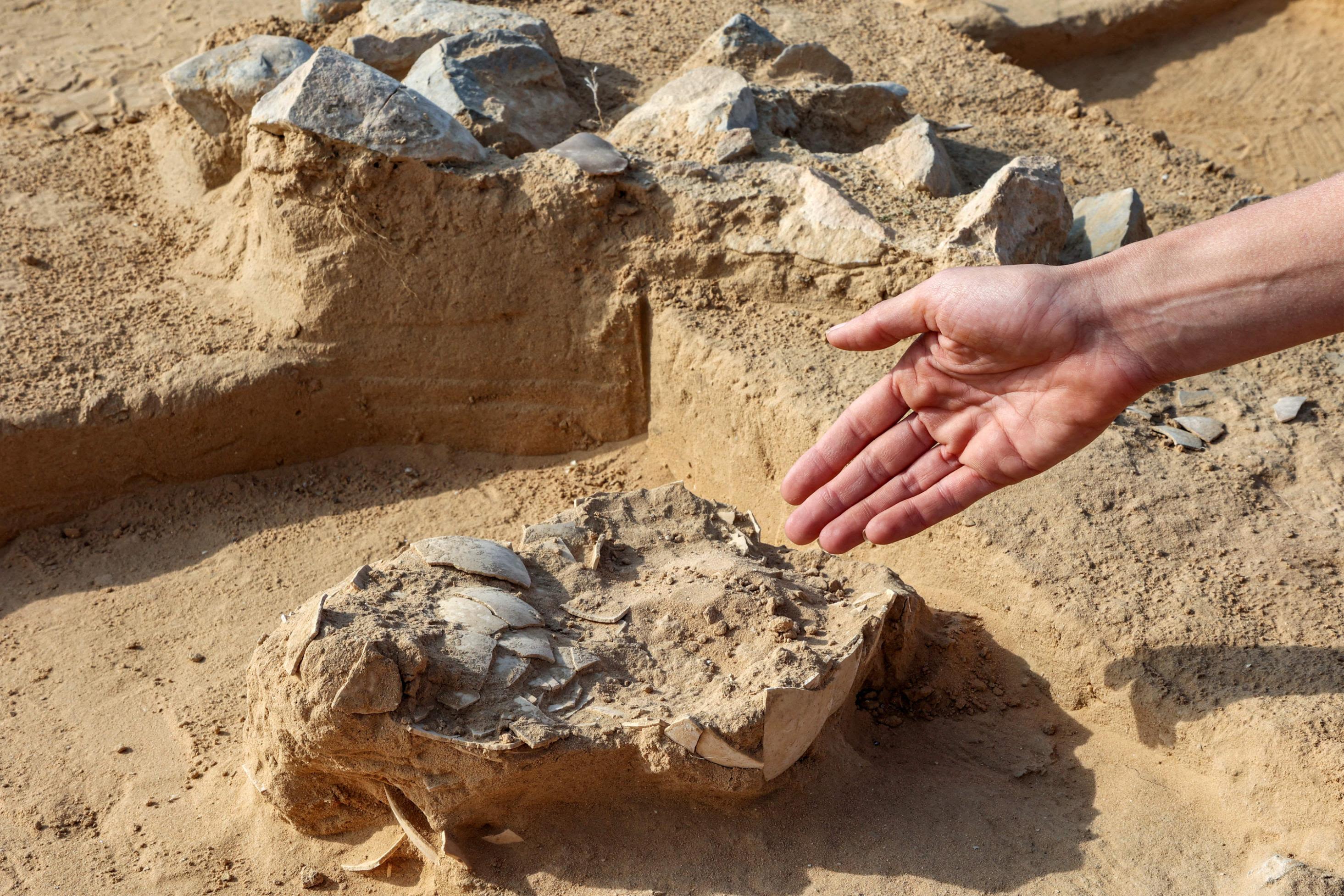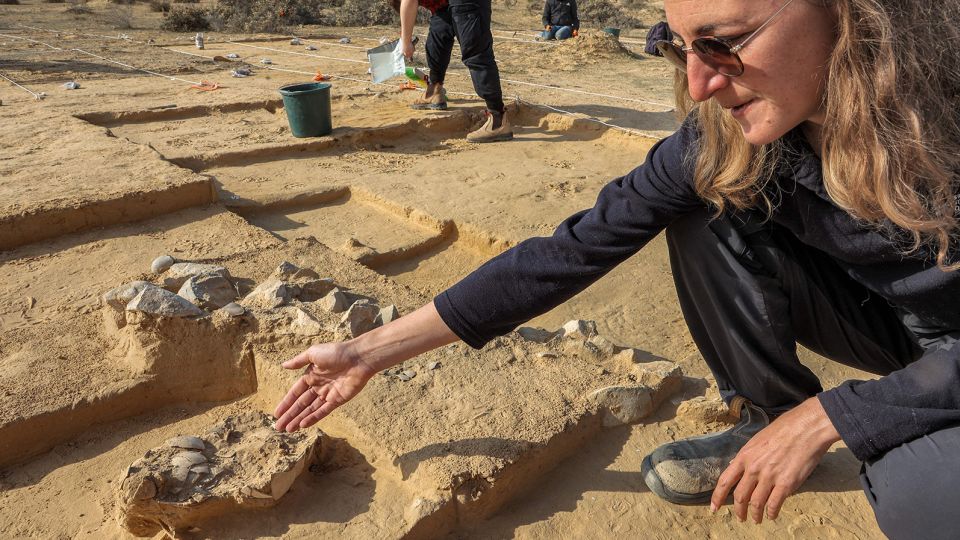In a well-known riddle, an egg is compared to a treasure, with the question: A box without hinges, a key, or a lid, yet inside lies hidden golden treasure. So who am I?
Eight ancient ostrich eggs, estimated to be between 4,000 and 7,500 years old, were found close to an old fire pit in the Negev, a desert region in the south of Israel, and they turned out to be as valuable as treasure for archaeologists there.

The Israel Antiquities Authority (IAA) said on Thursday that they had been uncovered during an archaeological dig in the Be’er Milka farmlands.
According to a news release from IAA, the eggs’ closeness to the fire pit shows that they were purposely collected by the ancient desert nomads who made use of the campground, however future lab testing will reveal more about their functions and age.
According to Lauren Davis, the IAA excavation director, “we discovered a campsite that spreads over approximately 200 sq. m. (2,153 square feet) and was frequented by the desert nomads since prehistoric times.”

“At the site, we discovered charred stones, flint and stone tools, ceramic sherds, but this collection of ostrich eggs is the truly unique discovery. Even though they didn’t erect any long-lasting structures at this location, the discoveries give us a sense of their existence there.
Davis added that the campsites were covered over by the dunes, keeping the eggs exceptionally well-preserved.
The IAA, which told CNN on Thursday the site had been excavated in the last week, said that ostriches were common in the region until they became extinct in the wild during the 19th century.
Their eggs were ornately decorated and were prized items among the elite circles of Mediterranean civilizations during the Bronze and Iron Ages.
 The ostrich eggs were discovered near an ancient firepit.
The ostrich eggs were discovered near an ancient firepit.
As well as being used as decorative items, ostrich eggs were also used in funerals, as water canteens and as a source of food.
“We find ostrich eggs in archaeological sites in funerary contexts, and as luxury items and water-canteens. Naturally, they were used as a source of food: one ostrich egg has the nutritional value of about 25 normal chicken eggs,” said Amir Gorzalczany, senior research archaeologist from IAA, in the release.
“It is interesting, that whilst ostrich eggs are not uncommon in excavations, the bones of the large bird are not found. This may indicate that in the ancient world, people avoided tackling the ostrich and were content with collecting their eggs.”
Source:








